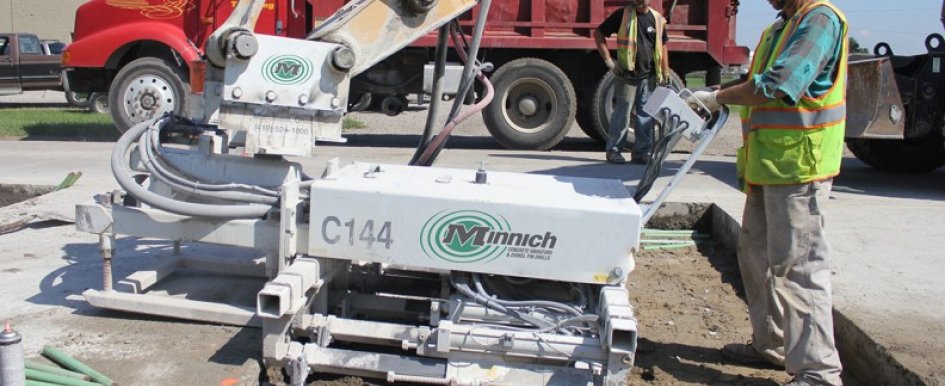
Getting the most from concrete dowel-pin drills goes beyond proper operation and maintenance. A key to maximizing drill performance, controlling costs and extending machine life is proper long-term storage.
Following the dowel-pin drill manufacturer’s storage recommendations can help prevent rust that impacts equipment performance, leads to costly downtime and shortens drill life span.
Consider the following five tips when storing dowel-pin drills for long periods of time, which is generally defined as 60 days or more.
1. Retract all cylinders.
Move all feed and lift cylinders to the retracted position. Retracting the cylinders will prevent the rods from rusting and collecting dust, which damages the cylinder rod seals.
2. Add oil to each drill.
Loosen and remove the air line located at the top of each drill. Pour a capful of oil directly into the air supply line. Reattach and tighten the air supply lines. Turn the main air supply on and then turn each drill valve on for one to two seconds. This will coat the inner parts of the rock drill with oil, preventing rust from forming and seizing up the inner parts of the rock drill while not in use.
3. Lubricate air motors.
Self–propelled drill units are driven by three air motors. Air motors are commonly replaced due to them seizing up from rust inside the motor. To prevent this, remove the air supply line and pour a pint of rock drill oil directly into the line. Reattach the air supply line to the motor and then tighten.
Once you are sure the line is tight, turn on the main air supply and drive the unit forward five feet and then backward five feet. Repeat this step. This will cause the pint of rock drill oil to completely coat the inside of the air motor, which will prevent rust while the unit is not in use.
4. Turn down exhaust deflectors.
Make sure that all exhaust deflectors are in the down-facing position to eliminate water collecting in the rock drill. Water collecting in the exhaust deflector will eventually make its way into the rock drill itself and lead to rust, causing the rock drill to seize.
5. Top off the oil reservoir.
Fill the oil reservoir with rock drill oil. This will eliminate the possibility of rust forming on the interior of the reservoir.
By considering these five tips, companies can help ensure that their dowel-pin drills are ready to drive productivity and profitability when removed from long-term storage. It is important to understand that these are general guidelines from Minnich Manufacturing. Companies should always follow storage recommendations from the manufacturer of their specific drills.
This is the second in a two-part series on dowel-pin maintenance and selection. Click here to read Part 1: 3 Ways to Get the Most From Your Dowel-Pin Drills.
